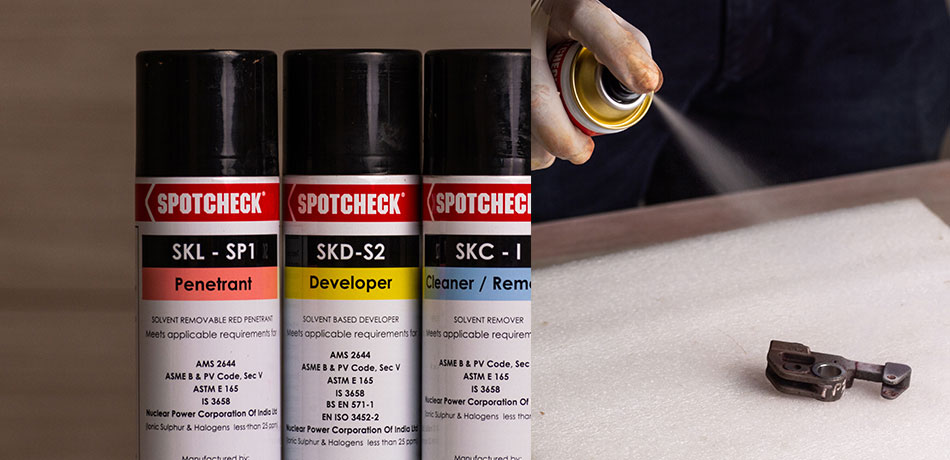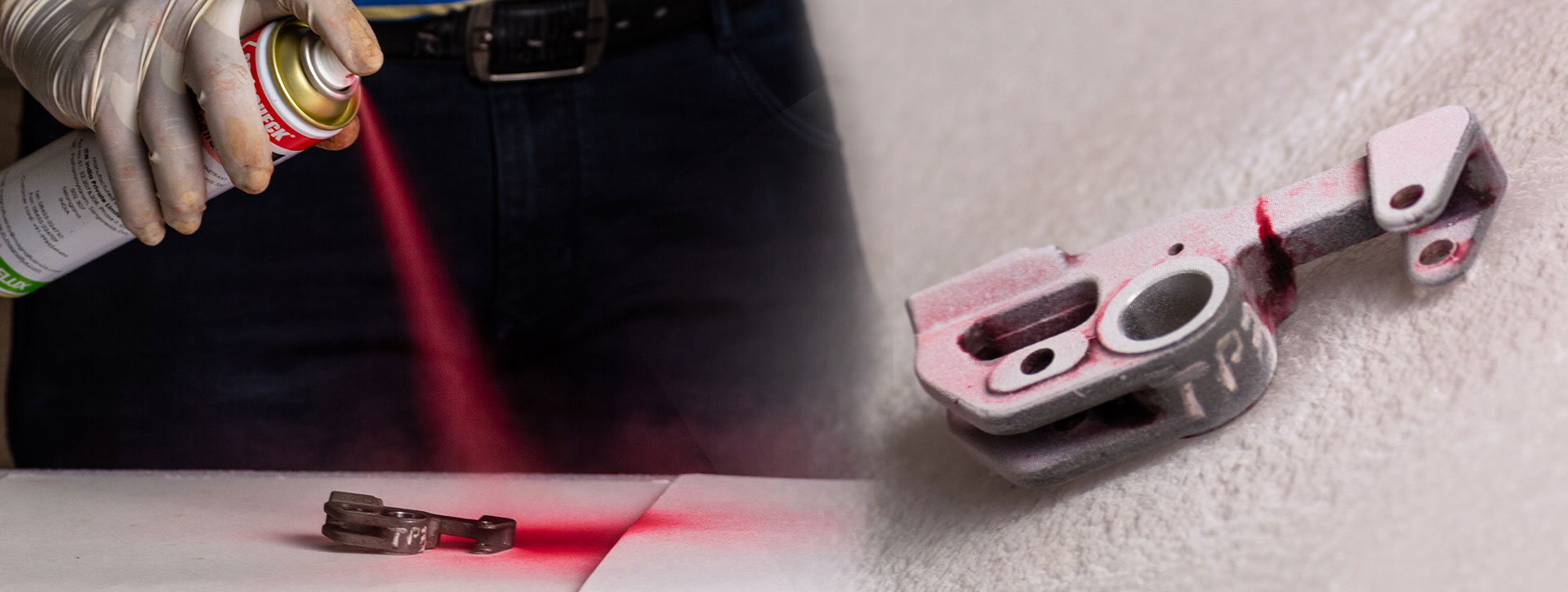Liquid Penetrant Testing (LPT )

Liquid Penetrant Testing or Inspection or Examination Liquid penetrant inspection (LPI), also known as dye penetrant inspection (DPI) or penetrant testing (PT), was first developed in the early 1940s to detect flaws on the surface of materials. Although there are more options in the way the test is performed, the basic principles have not changed over the years.
The Liquid Penetrant Testing or Examination method is an effective means for detecting discontinuities which are open to the surface of nonporous metals and other materials such as metals, plastics, glass, and ceramics e.g. typical discontinuities detectable by this method are cracks, seams, laps, cold shuts, laminations, and porosity.
Liquid penetrant inspection is a nondestructive test method which does not harm the samples or parts being inspected. The test is very effective in detecting porosity, cracks, fractures, laps, seams and other flaws that are open to the surface of the test piece and may be caused by fatigue, impact, quenching, machining, grinding, forging, bursts, shrinkage or overload. As a result, it is often used on lots of machined parts, as well as weldments, manufactured products, castings, forgings and other items that will be placed into service. Liquid penetrant inspection can be used successfully on nonporous and fairly smooth materials such as metals, glass, plastics and fired ceramics.
This test is named for the liquid, called penetrant that is applied to the sample during testing in order to make any surface flaws more visible. A variety of penetrant materials are available and selection is often based on the required sensitivity level of the test, equipment available at the test site to conduct the test and other factors:
-
The penetrant comes in two types of liquids-visible dye (colored red) and fluorescent dye (colored green-yellow).
-
Fluorescent penetrants are also classified by sensitivity levels ranging from one through four, with four being the most sensitive for detecting the finest flaws.
-
Penetrants can be washable with water, removable with a solvent or require treatment with an emulsifier that is lipophilic (oil-based) or hydrophilic (water-based).
The liquid penetrant contains either a colored dye easily seen in white light, or a fluorescent dye visible under black (ultraviolet) light. The penetrant is applied by dipping, spraying, brushing, or flowing. After penetrant application, a sufficient time (dwell time) is provided to permit the penetrant to permeate the flaw.
Prior to each liquid penetrant examination, the surface to be examined and all adjacent areas within at least 1 in. (25 mm) shall be dry and free of all dirt, grease, lint, scale, welding flux, weld spatter, paint, oil, and other extraneous matter that could obscure surface openings or otherwise interfere with the examination.
The liquid penetrant can be examined by PT or FPT method, for the highest sensitivity a fluorescent Penetrant in combination with a black light is available. PT can only find surface breaking defects, needs a very thorough surface preparation and has a high sensitivity.
The Process:
The testing process can be broken down into the following distinct steps:
1) Pre-cleaning
2) Penetrant application
3) Penetrant dwell time
4) Penetrant removal
5) Developer application
6) Developer dwell time
7) Inspection
8) Post-cleaning
Why choose our service
CEO – Mr. Gautam Patel is fully committed to stipulated business ethics (basic culture of SITPL) in real time practice hence one can blindly TRUST on overall holistic quality of NDT Services that are blended with AROMA of altruistic customer bonding.
All well educated and qualified Managerial and Support Staff also follow suit to CEO and collectively endeavor to accomplish and continuously improve shared Quality Objectives.
On time delivery of value added NDT Test Reports is maintained through perseverance by SITPL.
High level of Customer Satisfaction is a history for SITPL.
Benefits of Our Services
In order to endeavor for continuous optimum customer satisfaction, SITPL adapts creative flexibility and at times goes out of one’s way to meet the customer’s specific needs.

